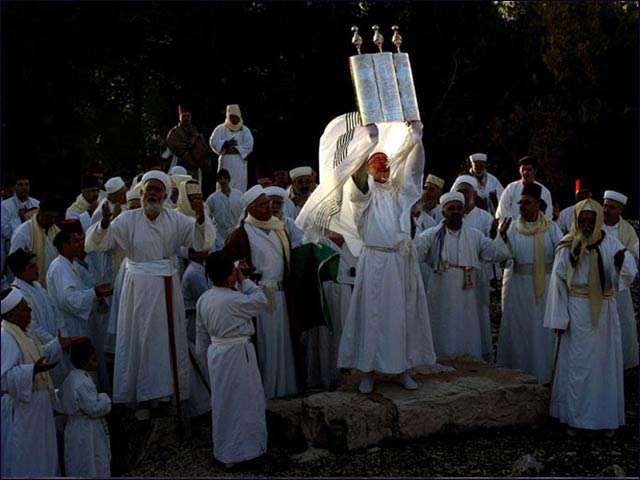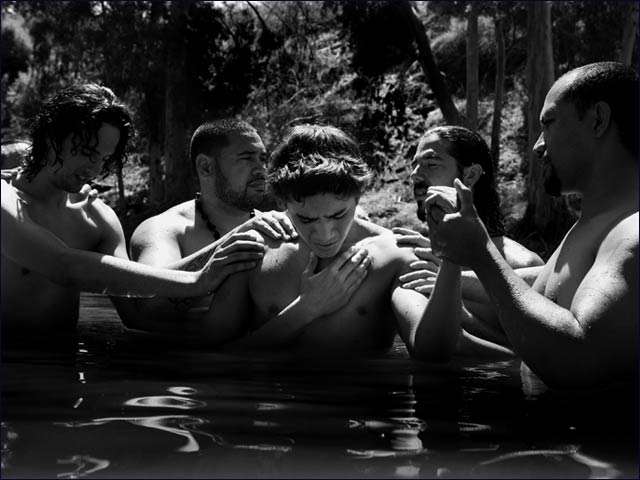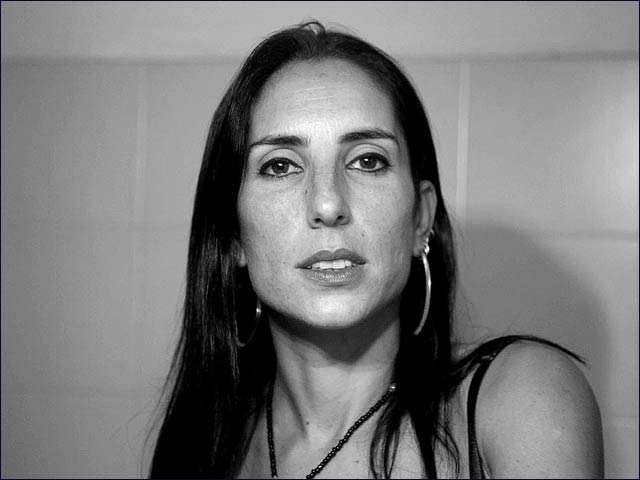Above: Christian Orthodox worshippers at the Church of the Holy Sepulcher in Jerusalem’s Old City during the Orthodox Easter ceremony of the Holy Fire. (Photo: Gali Tibbon)
“Photojournalism is like having a front-row seat in history,” says award-winning Israeli photographer Gali Tibbon. “It’s not just a personal experience. I want to document and transmit it all.”
Though her trusty Canon has snapped more than its fair share of conflict scenes, Tibbon primarily trains her lens on faith pilgrimages and rituals. Her widely published and exhibited images of baptism in the Jordan River, and Christians in Jerusalem and Ethiopia, won her awards including Sony World Photography Awards Travel Photographer of the Year for 2013 and second place at FotoWeekDC 2012.
A senior priest of the tiny ancient Samaritan community holds a Tora scroll, during the pilgrimage for The Holy day of Tabernacles (Sukkot), at their most sacred site at Mount Gerizim in the northern West Bank. Photo by Gali Tibbon.
She was featured in the documentaries “Beyond Assignment” and “Mirrors of War” (“Trompe l’oeil”) for her internationally acclaimed work, and recently exhibited at the PhotoMed Festival in Sanary-sur-Mer, France.
Tibbon recalls that her passion for pictures was ignited in 1987 at age 14, when she found LIFE magazine’s The Year in Pictures book from 1956 on the shelves of her late grandfather’s library.
“I remember seeing those incredible grainy black-and-white pictures,” she says. “I didn’t know a camera could do that. I fell in love with it.”
A young Maori pilgrim from New Zealand prays as he is about to be baptized in the Jordan River in Israel. Photo by Gali Tibbon
She enrolled in a photography course at the Israel Museum, learning how to process and print the film in a darkroom. Before long she had spent all her pocket money on print paper, chemicals and film for her first camera, a Canon AL1 that she still owns. “Around 1996, I realized that this is what I wanted to do with my life.”
Photojournalism was, in some way, a natural extension of Tibbon’s experience growing up near the prime minister’s residence in Jerusalem.
“There were always demonstrations there, with police blocking the road. Most people would turn away, but I had the opposite instinct to go and figure out what was going on,” says Tibbon, who went on to the Jerusalem School of Photography and the prestigious Eddie Adams photography workshop in New York.
As a child of Jerusalem, she found herself drawn to images of religion in action.
“Jerusalem is not only a center of political tension; it’s the cradle of faith, and I spend a lot of time in the Old City, 20 minutes from my house. It’s a bit like time traveling,” she says. “There are so many characters there. I got interested in meeting the people and researching entire microcosms and centuries-old traditions.”
A major project on Christianity in Jerusalem introduced her to the different denominations, each with its own history and language, “and I kind of fell in love with my city again.”
‘Soul photography’
Ethiopian Christian pilgrims and priests told Tibbon that in the 12th century, when Muslim conquerors forbade pilgrims in Jerusalem, the Ethiopians built their own version of the holy city, Lalibela, and continue to gather there on Orthodox Christmas in January.
“It was called Black Jerusalem, or New Jerusalem, and there are all kinds of legends of how it was built over several decades,” says Tibbon.
She has since been to Lalibela four times, documenting the Christmas pilgrimage to its 11 churches carved out of monolithic rock. “The most famous one is dedicated to St. George, patron saint of Ethiopia, and it is shaped like a cross.”
A ray of light penetrates from a cross-shaped window into the rock-hewn church of Bet Merkorios in Lalibela as an Ethiopian pilgrim walks by. Photo by Gali Tibbon
“Once a year, during Orthodox Christmas in January, this tiny village is transformed,” she says. “It hosts between 30,000 and 60,000 pilgrims. I found that some people had walked for 45 days to get there, with walking sticks and sacks on their shoulders holding grain and basic garments. They walk and meet others, camp out at night and continue walking by day to make it on time for the pilgrimage. It was almost biblical.”
Tibbon makes her living from assignments, but always works on her own projects at the same time. “Lalibela was soul photography for me,” she says.
“Photojournalism may seem very glamorous, but at the end of the day there is a lot of politics and handshaking. The news business is a beast that needs to be fed. So I always try to have a project of my own that I am passionate about. That balances my life.”
Recently she documented an Orthodox Christian pilgrimage in Poland, a Roma pilgrimage in Southern France and Kumbh Mela in India, the largest peaceful gathering on the planet, which draws about 80 million Hindu pilgrims over 55 days.
In December 2012, Tibbon was named a Canon Explorer, meaning she represents the European division of the global camera company in Israel along with fellow photographer Ziv Koren.
Tibbon says she was among the first Israelis to have a mobile phone with a modem to transmit images. Switching to digital was traumatic for her.
“I do my best to sort all my problems when I’m shooting, so when I get back to my computer I deal with it as minimally as possible,” says Tibbon, who admits to keeping a box of film in her refrigerator “just to remind me of the past.”
Portrait of the photojournalist by Maya Hasson.
Living with her partner in Jerusalem – he is also a photographer – she is an avid dancer, swimmer and runner.






Artículos Relacionados: